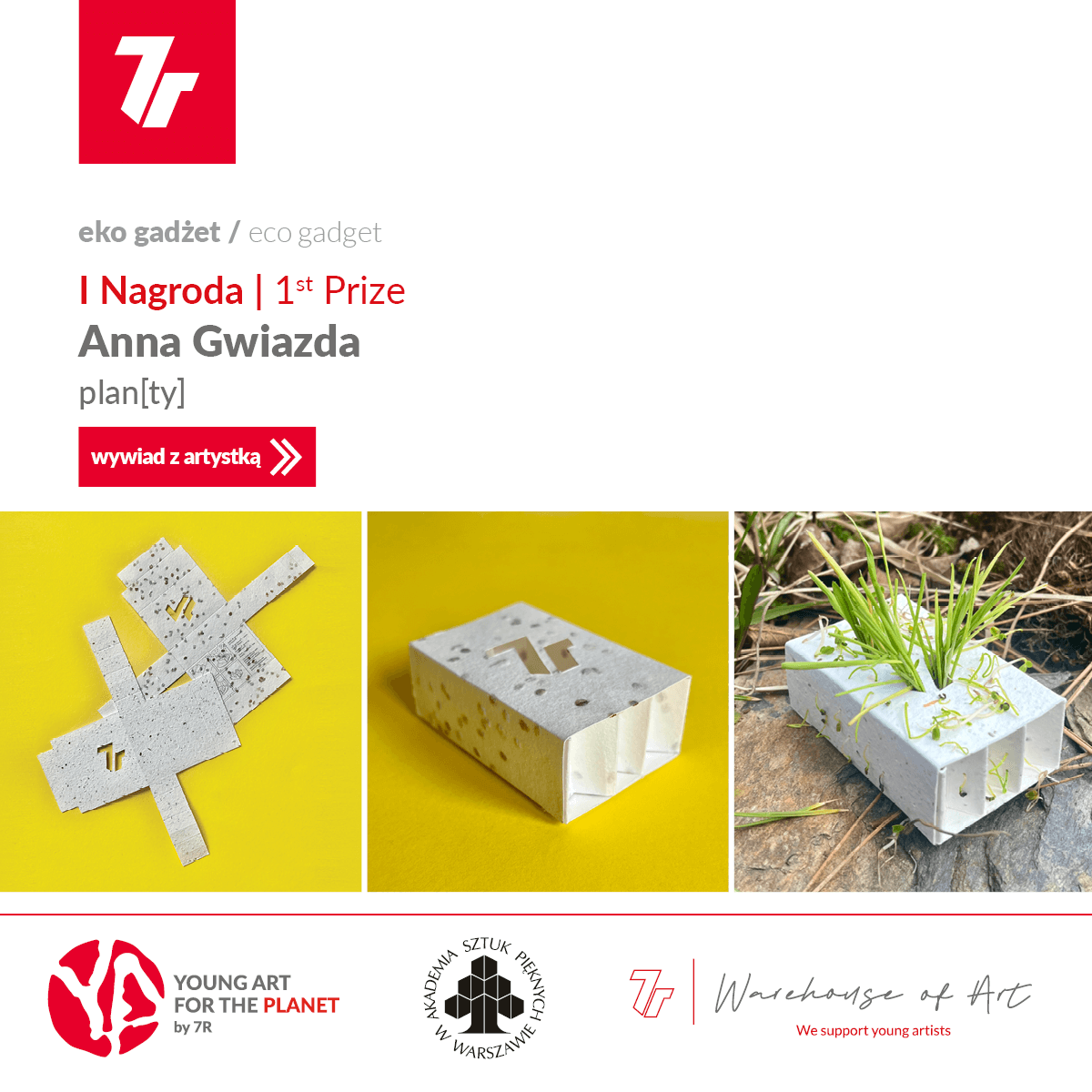Planty – a gadget with an ecological message

“It’s worthwhile choosing to use ecologically-friendly materials and process them sustainably. In the world of art, the artist takes on the role of educator and it’s worth communicating the values we believe in,” states Anna Eliza Gwiazda, whose ‘plan[ty]’ project won first prize in the ‘eco-gadget’ section of the 7R Warehouse of art ‘Young art for the planet’ competition.
The designer proposed a gadget made of biodegradable handmade paper with plant seeds that sprout and gradually break down the form of the gadget itself.
From the very beginning of thinking about the project, I decided that it should not be an item that you would associate with a typical gadget, which is something you don’t need. That’s not my philosophy nor the way I treat objects. It’s more important in my opinion to interact with an item than to possess it.
explains Anna Eliza Gwiazda
Biodegradable mini warehouse
The artist herself describes ‘plan[ty]’ as having the form of a miniature warehouse and its paper form is inspired by origami. The seeds used are a mix of Polish meadow plants that might be an additional attraction for foreign clients. As a result of the interaction created, the gadget’s use is spread out over time and involves the person it is given to in the process of growing plants to create a link between the user and the gadget. Three sides benefit from the use of the ‘plan[ty]’: the person receiving the gift, the person giving it, and the environment.
“I wanted to design an object that wouldn’t outlive the person who received it. I always wonder how well I have emphasised the ecological benefits of my projects,” declares the winner of first prize.
In the ecological sphere
The ecological aspect is clear in every respect of the design of the eco-gadget. The assembly instructions and how to care for the growing seeds is printed on the inner side of the box, which is why a ‘plan[ty]’ does not require additional packaging. They can also be flattened for transportation and storage and in this way their production generates a low carbon footprint.
“I decided on paper for my ‘plan[ty]’ because it biodegrades very quickly. Meanwhile, the germinating seeds and growing plants immediately show the process of change. Origami, is in turn not just a part of Japanese culture, it appears in all the cultures of the world and what’s more it occurs in nature and is manifested by its mathematical precision,” claims the artist.
Educators to the point
In her opinion, designers have a big role to play in designing things that, over their life-cycles, act on both the receiver and also on the natural environment.
It’s worthwhile choosing to use ecologically-friendly materials and process them sustainably. In the world of art, the artist takes on the role of educator and it’s worth communicating the values we believe in. How we communicate is down to individual preferences. It’s not just artists, but everybody should take responsibility for the world which we live in.
says Anna Eliza Gwiazda
The artist is part of the TakŁadnie collective and is involved professionally in the design on therapeutic items and toys but she is trying to develop into other areas of design.
“Recently I designed an item for recording memories, which was something like a personal diary. I took on this task while working therapeutists and refugees. Recently I tried to design some utility glass, which was quite a challenge for me,” says the designer.
About Warehouse of Art
The 7R Warehouse of art ‘Young art for the planet’ competition was open to students and graduates of Warsaw’s Academy of Fine Arts. Its guiding motto was “Technology, Ecology, People, Coexistence”. The competition requirement was to create a project of utility art with an ecological theme in one of three categories: Ergonomic seating, murals on the side of a fire water tank and an ecological 7R gadget. In total, 26 entries were submitted. The awarded projects are available at 7rwarehouseofart.pl.






